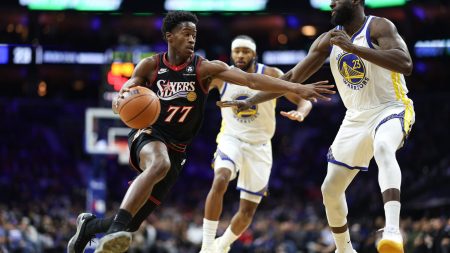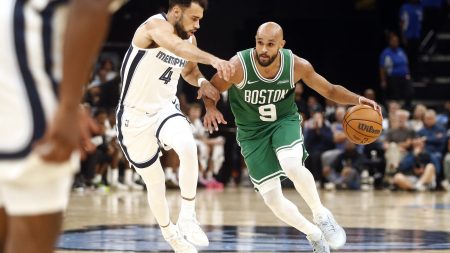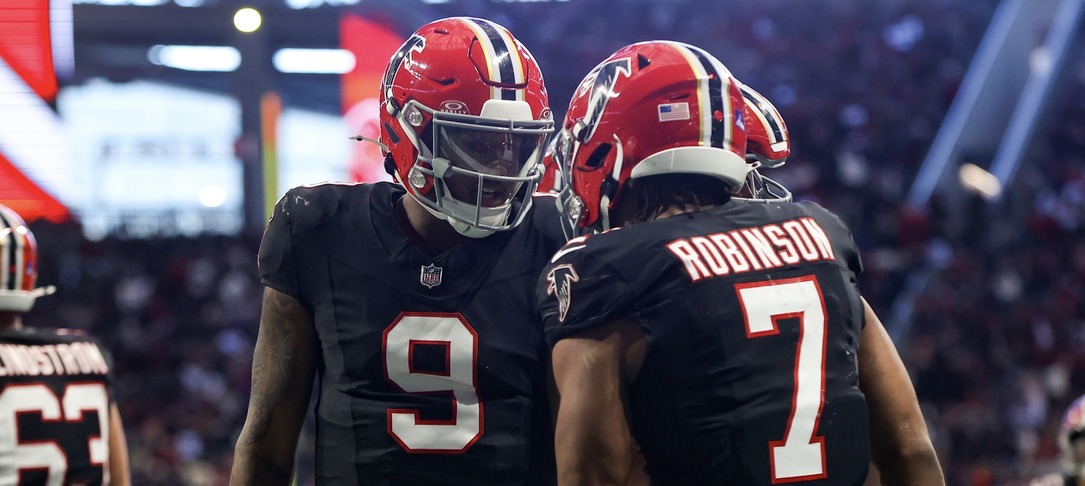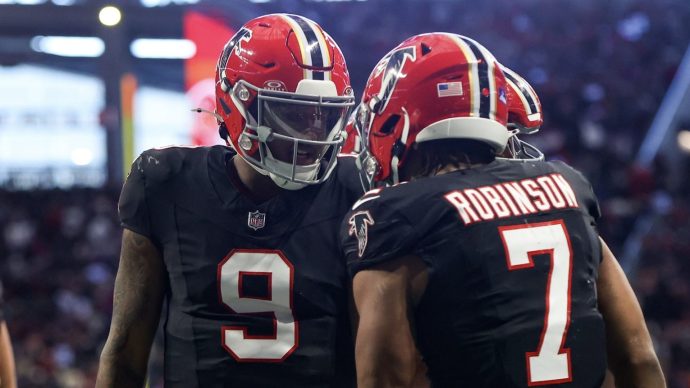Making money on player props isn’t strictly about finding winners. You certainly need to be able to make knowledgeable decisions about the players, but you also need to handle aspects that aren’t directly involved with the NBA.
Below, I’ll break down not only how to succeed with these outside aspects but also where to look to find what to pick with the players.
Top NBA Sites in All States
![]()


NBA Pick’Em Tips: Max Value Strategies
Make sure to implement all our best tips and winning strategies in your picks this season.
Bankroll Management
The most difficult aspect of player props for young users to understand is that you will lose. You’ll lose a lot. It isn’t about winning every play. It’s about making money. There’s a ton of variance in sports, and a loss doesn’t necessarily mean it was a bad pick. On the other hand, a win also doesn’t mean it was a good pick.
The easiest way to limit this variance is by using smart bankroll management. There’s enough variance in the actual sport and results themselves, you don’t need to add more variance via your style of play.
There are several ways you can use your bankroll, but it has to stay consistent. First, 1 unit should equal 1% of your bankroll. If you have a $1,000 bankroll, 1 unit would equal $10.
Once you understand units, you simply need to stay consistent. The easiest way to do this is to place 1 unit on every play. As you win more, your units increase, and you’ll place more actual money (not more units) on each play.
If you want to get more advanced, you can create a scale between 1 and 5. You can play 1 unit on your least favorite plays and 5 units on your favorite ones. The in-between will sit at 2, 3, and 4 units. This is for more advanced players, as you have to make decisions about how much you like specific plays compared to others.
Regardless of whether you’re a novice or expert, you need to have smart, disciplined bankroll management, or you aren’t going to profit over the long run.
Leverage Sites
Leveraging sites is one of the best ways to find edges in player props. There are a few different ways to leverage sites, as they all offer different types of ways to play player props.
The first way to leverage a site is to compare the actual prop. For instance, LeBron James could be set at 23.5 points on PrizePicks, 24.5 on Underdog, and 22.5 on Sleeper. Assuming the payout is the same on all three sites, you’re getting the biggest discount on Sleeper. That’s where you should play.
When considering this, it’s important to understand that getting even a point off of a total can add up over the long run.
The second way to leverage these sites is via the payout. PrizePicks has set payouts, excluding stacks, while Sleeper has variable odds, and Underdog is a combination of both of them.
If you have a play [same on all sites] that involves Luka Doncic and Trae Young, you should compare the payouts on each site. It’ll be 3x on PrizePicks, but it might be 3.15x on Underdog and 3.35x on Sleeper. In this instance, Sleeper is the best site to make this play.
You may think 0.35x is only a slight increase, but if you extrapolate this over 100 wins, you’re now up +35 units compared to PrizePicks and +20 units over Underdog.
Editor’s Note: Did you know DFS pick’em apps like Underdog and Sleeper are live in many states where online sports betting isn’t yet legal? Use promo code PROPS when signing up to get started!
Minutes
Minutes are the most important aspect to consider for the NBA. If you aren’t on the court, you can’t record stats. It’s simple, but it’s an overlooked aspect of playing NBA props.
Limited opportunities limit players drastically more in basketball than in other sports. If you get only one shot at the basket, your ceiling is 4 points. In baseball, one at-bat can turn into a home run. In football, one play can turn into 99 yards and a touchdown.
You certainly want more opportunities in other sports, but opportunities are more important in basketball because of the limited ceiling a player has on any individual opportunity. More minutes equal more opportunity for specific opportunities.
Andre Drummond is one of the easiest players to see this with in the NBA because his high-end per-minute production is outstanding. In 2023-24, Drummond averaged 8.4 points, 9.0 rebounds, 0.5 assists, 0.9 steals, and 0.6 blocks in only 17.1 minutes per game for the Chicago Bulls.
On a normal basis, Drummond is limited in his opportunities because of his lack of minutes. On a per-36-minute basis, his averages are 17.7 points, 18.9 rebounds, 1.0 assist, 1.9 steals, and 1.3 blocks.
Granted, more minutes don’t guarantee production to expand at a certain rate, but the minutes show the difference in what’s available for a player, particularly like Drummond.
Matchups
Matchups are one of the most important aspects of projecting basketball props. Some teams are drastically better or worse against certain positions, and those are situations you can avoid or take advantage of.
In 2023-24, the Washington Wizards allowed 26.72 points per game to opposing centers. It was the most in the NBA. The Sacramento Kings allowed only 19.57 points per game to the position, which was the lowest in the league. The difference between these teams was an average of 7.15 points per game.
Matchups aren’t only important for points, though. They’re important for every aspect of basketball. Rebounds, assists, three-pointers, steals, blocks, and turnovers are all aspects that are affected by matchups.

Injuries/Rest Days
Injuries and rest days are one of the most important in the NBA because they dictate minutes and opportunities. These aren’t quite as important for players with small roles, and they are more important for stars. That isn’t to say they aren’t important for everyone, depending on the situation.
When a player misses a game, their minutes and opportunities are distributed to others. For example, if Nikola Vucevic would’ve missed a game in 2023-24, Drummond would’ve bumped from ~17 minutes to closer to 30. The difference in minutes gives an immediate upgrade in opportunity.
When you’re considering stars, the opportunities are more than just minutes. Certain players demand the ball, and it limits the opportunities of others. For example, the Milwaukee Bucks stars Damian Lillard and Khris Middleton averaged 5.1 and 4.0 more points per game without Giannis Antetokounmpo on the court.
Injuries and rest days change players’ minutes and roles, which are what create opportunities. It’s an important aspect of figuring out those potential stats.
Advanced Metrics
Box scores are a useful tool sometimes, but they generally don’t tell us what we want to know. They tell us the past, but we’re looking at the future. There are several predictive stats that we can use to have a better chance at hitting player props in the future.
For scoring, shot attempts are more important than points. If one player shoots 5/20 and another shoots 5/5 and they both score 10 points, they look the same in the box score. They aren’t the same, though, and we can project that in the future, the first player will find [positive] regression while the second player will find [negative] regression.
Rebound chances are more important than actual rebounds. I prefer the player with fewer rebounds and more chances in the future compared to the player with more rebounds and fewer chances. Keep in mind, these are for drastic differences, as some players are better at converting their chances.
Arguably the most important of these predictive stats are potential assists. So much can go wrong with assists because you’re banking on a player to do something very specific with the ball while also making the shot. There’s variance to shooting, and potential assists will always predict the future better than assists in the box score.
Featured Image Credit: Imagn







